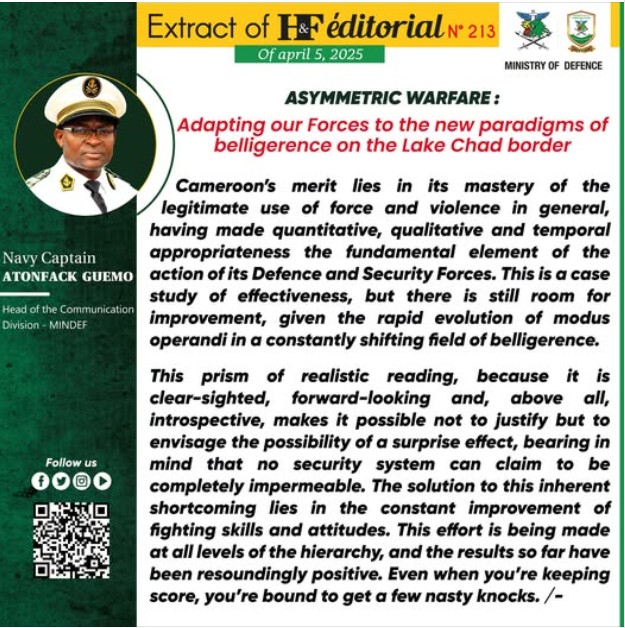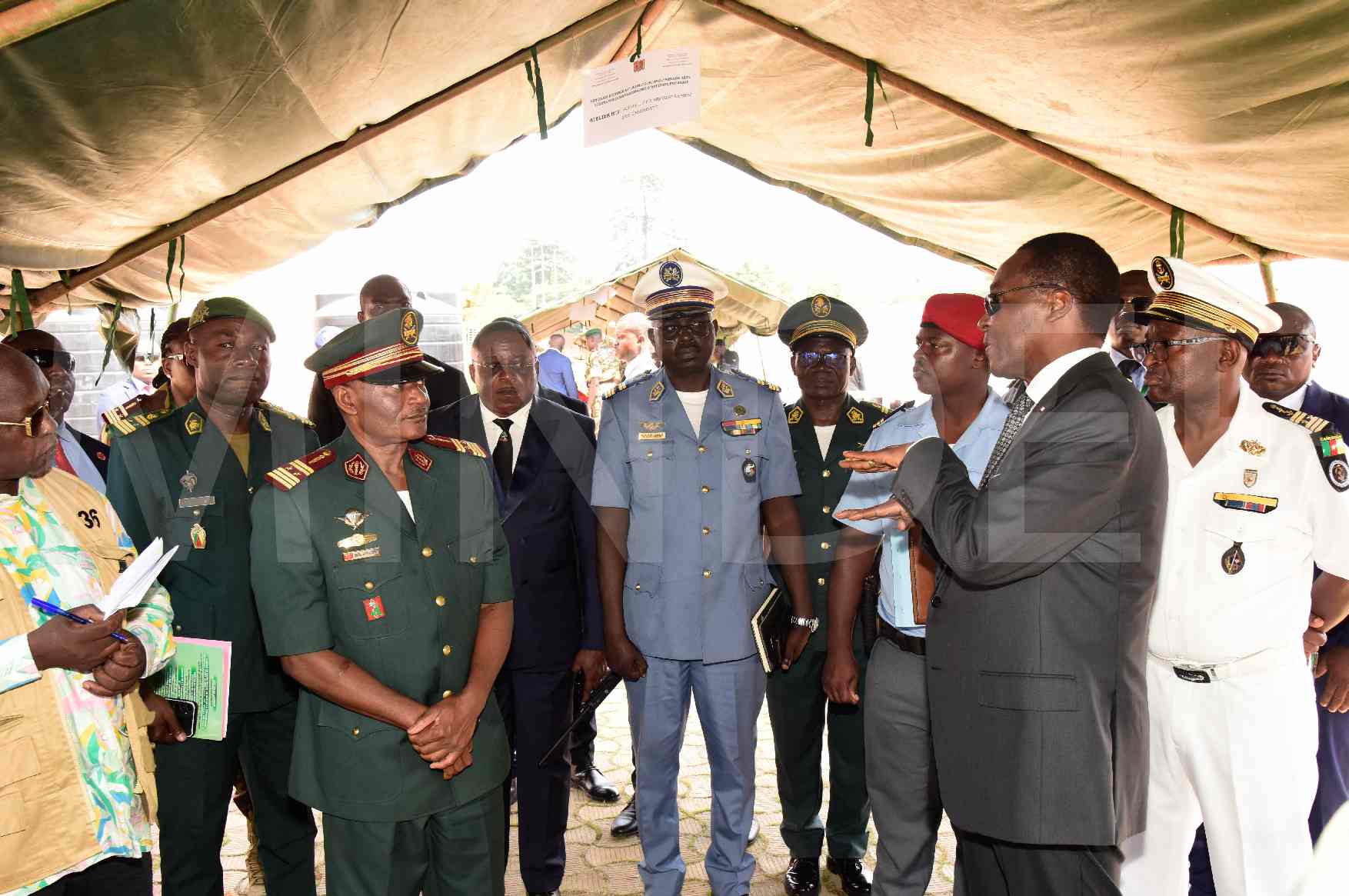In managing the type of belligerence that is currently in vogue, and in the face of an enemy whose personality is unstructured, whose manifestations are often unpredictable, and whose methods fluctuate, States are confronted with numerous problems, not least of which is the effectiveness of the means of combat to the enemy’s methods of operation, given that there remains a real degree of uncertainty as to whether the expected effects will be achieved, despite the fact that success factors are taken into account in the process of defining the response to the threat.
Obviously, solving this system of equations requires an undeniable amount of power, not only in terms of energy or potential, and even less in terms of hierarchy, but also in terms of the ability to mobilise, at the right time, the resources needed to achieve the set objectives.
From this point of view of effectiveness, Cameroon can proudly claim the status of a power, as it is one of the few countries that has managed to avoid any doctrinal or functional disruption in its security architecture, which was conceived exclusively according to the codes of regular conflict.
Each time, it has had to find the right balance between the structural and environmental aspects of a given situation and the most appropriate response to it. It’s a real exercise alchemy, made all the more complex by the fact that the response to the jihadist threat, as it stands, cannot be transposed to separatist aspirations, and certainly not to maritime piracy, cattle rustling, hostage-taking or poaching.
Based on the principle that you don’t need a hammer to kill a fly, the use of fire and civil-military action has always been methodically calibrated to achieve the desired effect, either on the target or in meeting the needs of the population, while minimising the possibility of unintended harm to people or the environment.
Thus, in addition to the rules of engagement of the universal authority, the Cameroonian Forces are guided by much more restrictive principles of action, in particular the priority given to the accuracy of information in order to avoid generalised suspicion and the dangerous mix-ups that could result from it, the precise use of fire rather than the often indiscriminate shooting, the disarming of the enemy rather than its annihilation, the protection and psychosocial support of ex-combatants rather than their exclusion from society.
The results of this successful proportionality include low casualty rates and a rapid return to social normality in areas previously in acute crisis, with no group from the international terrorist community able to claim control over any part of Cameroonian territory.
Cameroon’s merit lies in its mastery of the legitimate use of force and violence in general, having made quantitative, qualitative and temporal appropriateness the fundamental element of the action of its Defence and Security Forces. This is a case study of effectiveness, but there is still room for improvement, given the rapid evolution of modus operandi in a constantly shifting field of belligerence.
This prism of realistic reading, because it is clear-sighted, forward-looking and, above all, introspective, makes it possible not to justify but to envisage the possibility of a surprise effect, bearing in mind that no security system can claim to be completely impermeable. The solution to this inherent shortcoming lies in the constant improvement of fighting skills and attitudes. This effort is being made at all levels of the hierarchy, and the results so far have been resoundingly positive. Even when you’re keeping score, you’re bound to get a few nasty knocks. /-




